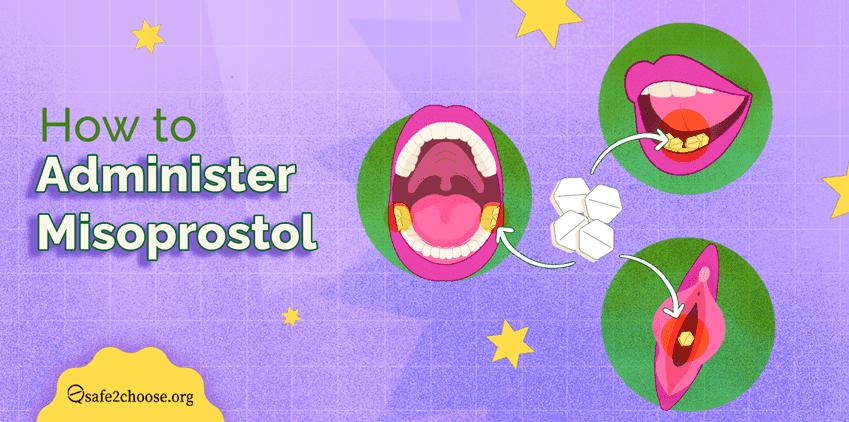YouTube: https://www.youtube.com/watch?v=YUcsbgqjUKM
El aborto en casa, también conocido como aborto con medicamentos, se está volviendo cada vez más popular entre las mujeres que desean interrumpir su embarazo. El procedimiento no es invasivo, no requiere cirugía y puede llevarse a cabo donde se sientan cómodas y seguras.
Para dejar en claro todo sobre este procedimiento seguro y efectivo, aquí hay 5 cosas que debes saber sobre un aborto en casa.
1. ¿Qué es un aborto en casa y quién puede hacerlo?
Un aborto en casa o un aborto con medicamentos generalmente es una combinación de dos medicamentos que funcionan juntos para interrumpir un embarazo. Los dos medicamentos utilizados son mifepristona y misoprostol. La mifepristona bloquea el flujo de progesterona, una hormona necesaria para apoyar el embarazo. El misoprostol causa calambres que vacían el útero con un sangrado. Un aborto con medicamentos también se puede realizar usando solo Misoprostol, pero es más efectivo usar ambos medicamentos juntos. De hecho, la combinación de Mifepristona y Misoprostol es efectiva en aproximadamente 95 de cada 100 casos, mientras tanto con solo Misoprostol en 85 de 100 casos.
El aborto con medicamentos es un procedimiento común y seguro para interrumpir los embarazos del primer trimestre. Los abortos con medicamentos seguros se pueden realizar hasta 13 semanas, o aproximadamente tres meses después del primer día de su último período. De acuerdo con Planned Parenthood, las pastillas abortivas son 98 por ciento efectivas si tiene hasta ocho semanas de embarazo, 96 por ciento efectivas si tiene entre ocho y nueve semanas de embarazo y 93 por ciento efectivas si tiene entre nueve y 13 semanas de embarazo . Después de 13 semanas, un aborto quirúrgico es necesario.
2. ¿Cómo obtener las pastillas abortivas?
Las regulaciones que rodean el aborto con medicamentos cambian de un país a otro. Las píldoras abortivas están disponibles en la mayoría de los países de Europa, América del Norte y Oceanía. En continentes como África, América Latina y Asia, podría estar más restringido. La mifepristona puede no estar disponible, pero el misoprostol es más fácil de encontrar. De hecho, aunque la mifepristona solo se usa para el aborto, el misoprostol tiene otros usos médicos además del aborto (inducir el parto, hemorragia posparto, úlcera estomacal, etc.). Si es necesario, safe2choose puede referirte a organizaciones confiables en tu país que pueden ayudarte a acceder a las píldoras abortivas o encontrar información local al respecto. Puedes contactarnos en info@safe2choose.org.
3. ¿Qué esperar y cuáles son los efectos secundarios?
Durante el proceso, los efectos secundarios y su intensidad pueden variar. Después de tomar la primera pastilla, mifepristona, la mayoría de las personas no experimentan ningún efecto secundario, pero no es inusual sentir náuseas o comenzar a sangrar. Después de tomar la segunda píldora, generalmente un conjunto de 4 misoprostol, se pueden sentir sangrado y calambres similares a los calambres del período menstrual normal. También puedes sentir náuseas y experimentar calambres intensos y sangrado abundante.
Se pueden expulsar grandes grupos de tejido o coágulos de sangre después de tomar misoprostol (hasta el tamaño de un limón, según Planned Parenthood), especialmente entre las 9 y 13 semanas del embarazo. El sangrado debería comenzar a reducirse después de unas pocas horas, pero puede tomar más tiempo. Los calambres continuarán por un día o dos y disminuirán en intensidad con el tiempo. El ibuprofeno puede ser realmente útil y se debe evitar la aspirina, ya que puede causar más sangrado. La mayoría de las personas compara el aborto con medicamentos con la sensación de un aborto espontáneo temprano.
Otros efectos secundarios incluyen náuseas, vómitos, diarrea, mareos, fatiga y fiebre leve de hasta aproximadamente 38 grados. En caso de fiebre más alta que eso, se debe llamar a un médico de inmediato. El riesgo de infección con un aborto en la casa es muy bajo, pero las mujeres deben prestar atención a las señales de advertencia.
4. ¿Es seguro el aborto en casa?
Un aborto en el hogar es realmente seguro y efectivo si se realiza correctamente. Millones de personas han usado las pastillas de manera segura. Menos del 1 por ciento de las personas que tienen abortos con medicamentos experimentan efectos secundarios graves o abortos incompletos. Si este es el caso, las mujeres pueden consultar con un médico o un consejero para decidir si necesitarán tomar más medicamentos, intentar nuevamente en casa o someterse a un aborto quirúrgico si su país lo permite.
5. ¿Cómo me sentiré después de tener un aborto?
Descansar es importante después de un aborto en casa. Por lo general, puedes volver al trabajo, la escuela o la mayoría de las otras actividades normales al día siguiente. Evita el trabajo pesado o el ejercicio. Puedes tener relaciones sexuales tan pronto como te sientas lista. Solo escucha tu cuerpo y tu deseo. También se recomienda usar condones u otras formas de métodos de prevención, ya que puedes quedar embarazada nuevamente tan pronto como 8 días después de usar las pastillas abortivas. La mayoría de las personas se sienten bien en un día o dos, pero el sangrado puede durar una semana o más después del aborto. Los calambres pueden ocurrir por unos días. Después del aborto, es totalmente normal experimentar muchas emociones diferentes. Todas tienen una experiencia diferente. La mayoría de las mujeres se sienten aliviadas y no se arrepienten de su decisión. Otras pueden sentir tristeza, culpa o arrepentimiento, ya que también tienen que lidiar con un gran estigma de la sociedad. Muchas tienen todos estos sentimientos en diferentes momentos.
Estamos aquí para apoyarte con tu aborto en casa
La mayoría de las mujeres se sienten mejor si tienen a alguien con quien hablar después de un aborto en casa. Pero incluso si no crees que haya alguien en tu vida con quien puedas hablar, no estás sola. Puedes contactar a nuestro equipo de consejeras siempre listas para escucharte en: info@safe2choose.org.


